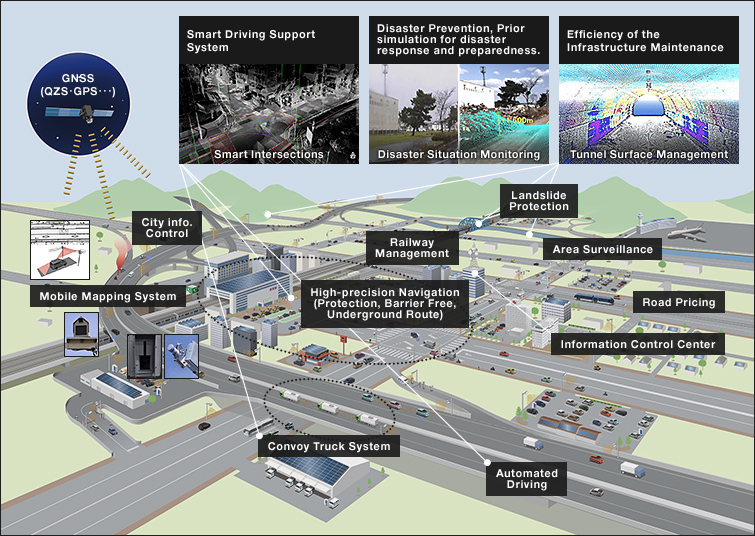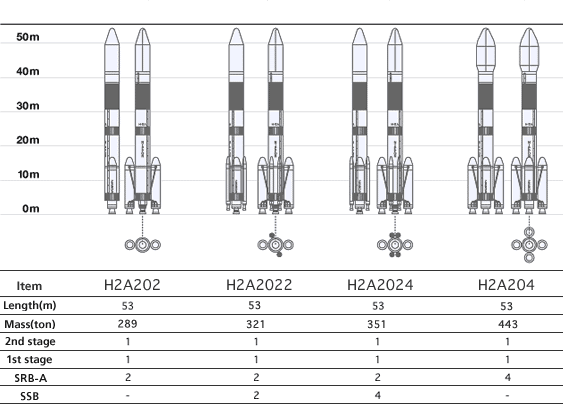Featured image credit: Mitsubishi Heavy Industries, Ltd./JAXA
Launch Window | October 26, 2021 – 02:00-03:00 UTC | 11:00-12:00 JST |
|---|---|
Mission Name | QZS-1R, geographic positioning satellite |
Launch Provider | Mitsubishi Heavy Industries (MHI) |
Customer | Japan’s Cabinet Office, Government Of Japan Office of National Space Policy |
Rocket | H-IIA 202 |
Launch Location | Yoshinobu Launch Complex, Tanegashima, Japan |
Payload mass | ~4,000 kg (~8,800 Ib) |
Where is the satellite going? | Quasi-zenith orbit (geosynchronous orbit, at a 45° inclination) |
Will they be attempting to recover the first stage? | No, H-IIA is not capable of recovery |
Where will the first stage land? | It will crash into the ocean |
Will they be attempting to recover the fairings? | No, H-IIA is not capable of recovery |
Are these fairings new? | Yes |
How’s the weather looking? | TBD |
This will be the: | – 27th launch of the H-IIA 202 variant – 44th launch of the H-IIA rocket – 83rd launch from Tanegashima, Japan – 104th orbital launch attempt of 2021 |
Where to watch | Official livestream |
What does all this mean?
Mitsubishi Heavy Industries (MHI) is preparing for its QZS-1R mission, which will launch one geographic positioning satellite into geosynchronous orbit (GEO), at a 45° inclination. The QZS-1R is a quasi-zenith satellite, a replacement for QZS-1 that was launched in 2010. The mission will be launching from the Yoshinobu Launch Complex, in Tanegashima, Japan and will mark the 44th flight of the H-IIA rocket.
QZS-1R Mission
Payload
The QZS-1R navigation satellite will be a part of the Quasi-zenith Satellite System (QZSS), a constellation of geographic positioning satellites. Currently, there are four satellites in this constellation. The first satellite (QZS-1) was launched on September 11, 2010. This satellite was designed for a 10-years life service, which means that as of 2020 it had already exceeded its lifespan. Therefore, the QZS-1R will replace it. After that, plans are set to add three more satellites to the QZSS in 2023.

Once in orbit, the QZS-1R satellite will be providing highly accurate positioning information for a variety of applications, including some new ones such as automated driving and disaster prevention.

Thanks to its operational orbit, the satellite will be passing near the zenith over Japan, thus having optimal high-elevation visibility. In other words, its service will not be affected by topographical features. As can be seen from the image below, the quasi-zenith orbit (QZO) for QZSS is shaped like a figure eight with north-south asymmetry. This makes satellites on this orbit spend more time in the northern hemisphere (around 13 hours versus 11 hours in the southern hemisphere) and remain near Japan for a long period of time.

Timeline (standard GTO mission)
All times are approximate.
| Hrs:Min:Sec From Lift-Off | Events |
| – 00:00:18 | Guidance flight mode on |
| – 00:00:05 | LE-7A ignition |
| – 00:00:01 | SRB-A ignition |
| 00:00:00 | Lift-Off |
| + 00:01:39 | SRB-A burn out |
| + 00:01:46 | SRB-A separation |
| + 00:03:25 | Fairing separation |
| + 00:06:36 | Main engine cutoff (MECO) |
| + 00:06:44 | First stage separation |
| + 00:06:50 | Second stage ignition 1 (SEIG1) |
| + 00:12:33 | Second stage cutoff 1 (SECO1) |
| + 00:24:23 | Second stage ignition 2 (SEIG2) |
| + 00:27:39 | Second stage cutoff 2 (SECO2) |
| + 00:28:26 | Second stage separation |
H-IIA 202 Rocket
H-IIA is a two-stage liquid-fuel medium-lift launch vehicle operated by Mitsubishi Heavy Industries for JAXA. It is about 53 m (174 ft) in height and 4 m (13 ft) in diameter and is capable of placing a 4,000 kg payload into Geostationary Transfer Orbit (GTO). Its maiden flight took place on August 29, 2001. Since then, it has launched 43 times, with just one failure that occurred on November 29, 2003. The H-IIA rocket has several variants, with only H-IIA 202 and H-IIA 204 currently being active.

H-IIA rockets have a three to four number configuration code following the prefix “H2A”. The first number represents the number of stages. The second number denotes the number of liquid rocket boosters (LRBs). Finally, the third number shows the number of solid rocket boosters (SRBs). For this launch, the H-IIA 202 rocket will have two stages, no LRBs, and two SRBs.
| First Stage | Solid Rocket Booster | Second Stage | |
| Engine | LE-7A | SRB-A | LE-5B |
| Propellant | LH2/LOx | HTPB Composite | LH2/LOx |
| Propellant Mass, kg | 100,000 | 65,000 each | 16,600 |
| Thrust, kN (lbf), vacuum | 1,098 (246,840) | 2,520 (566,519) each | 137 (30,799) |
| Specific Impulse (ISP), s, vacuum | 440 | 283 | 448 |
| Burning Time, s | 390 | 100 | – |

First Stage
All stages of H-IIA rocket are expandable. Its first stage is powered by an LE-7A engine and is capable of producing 1,098 kN of thrust, with an ISP of 440 s. The propulsion system runs on liquid hydrogen (LH2) and liquid oxygen (LOx). Apart from the engine section, this stage consists of fuel tanks, a center section connecting them, and an interstage.
SRB-A
A pair of SRB-As on the H-IIA 202 rocket fire for approximately 100 s from liftoff. Each one of them is capable of producing 2,520 kN of thrust, with an ISP of 283 s, which augments total thrust of the rocket.
Second Stage
A second stage is powered by an LE-5B engine that also runs on LH2 and LOx and can be ignited up to three times. This stage is capable of producing 137 kN of thrust, with an ISP of 448 s. The avionics system can be found on the equipment panel of this stage. The hydrazine-jet reaction control system is mounted under the avionics equipment panel and is used for attitude control.
In addition, a long-coast variation of this stage is available for geostationary orbit missions. It features several modifications that allow enhancing the mission time and suppressing the propellant loss during long-coast.
Payload fairings
Three types of payload fairings (4S, 5S, and 4/4D-LC) are available for H-IIA rockets. The first two of them can be used for a dedicated launch, whereas the 4/4D-LC model can be used for a dual launch.





